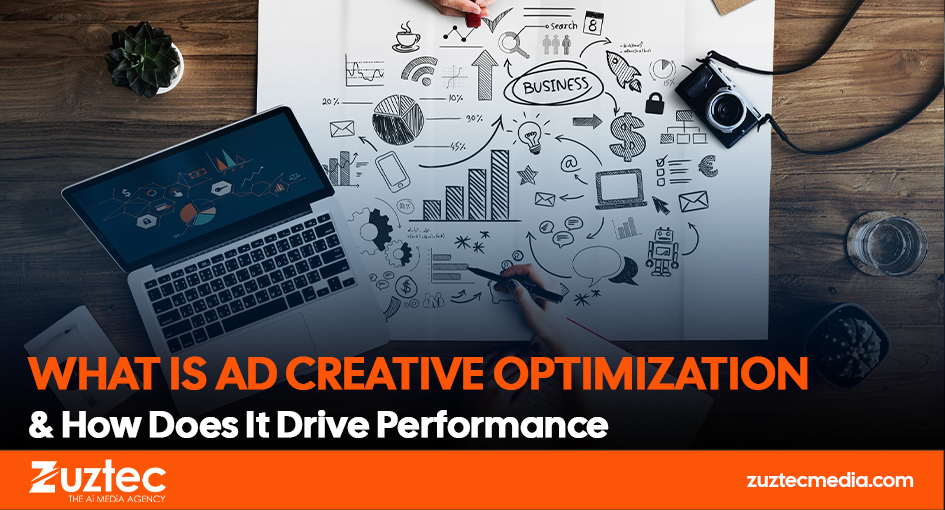
What Is Ad Creative Optimization & How Does It Drive Performance
In the world of digital advertising, capturing attention is half the battle. With so many brands competing for a user’s time and clicks, your ad creative—the visuals, headlines, copy, and overall design—can make or break your campaign. Even with a large budget or the perfect audience targeting, poor creativity can lead to low engagement, high costs, and disappointing results.
That’s where ad creative optimization comes in. It’s the process of testing, analyzing, and refining your ad elements to improve performance across platforms like Facebook, Google, Instagram, and more. Whether you’re running image ads, video ads, or carousel campaigns, optimizing your creatives can significantly boost click-through rates, lower cost-per-click, and drive better conversions.
Many advertisers focus heavily on targeting and bidding strategies, but creative is what users actually see and interact with. A powerful, relevant, and well-designed ad not only stops the scroll but also drives real business outcomes. The best part? You don’t need to be a professional designer or marketing expert to get started. With the right approach and tools, anyone can learn to test and improve ad creatives for better results.
Let’s break down the essentials of advertisement creative optimization simply and practically. You’ll learn how to analyze your ad performance, what elements to test, and how to create content that resonates with your audience. Whether you’re working with a team or managing ads on your own, these tips will help you get the most out of every dollar you spend.
1. What Is Advertisement Creative Optimization?
Advertisement creative optimization is the practice of improving the design and messaging of your ads to increase their performance. It involves analyzing how your ads are doing, identifying weak points, and making data-driven adjustments to visuals, headlines, copy, CTAs, and formats.
Some key goals of creative optimization include:
- Increasing click-through rates (CTR)
- Lowering cost-per-click (CPC)
- Improving conversion rates
- Enhancing brand recall and engagement
2. Why Ad Creative Optimization Matter More Than You Think
No matter how smart your targeting is, people won’t click on boring or confusing ads. The visual and messaging elements of an ad are often the first things users notice, and they decide in just a few seconds whether to scroll past or engage.
Here’s why creatives matter:
- First impressions: Your creative determines how your brand is perceived.
- Emotional connection: Great ads trigger feelings—joy, curiosity, urgency, and trust.
- Clear messaging: Strong creatives communicate your value quickly and clearly.
3. Elements of an Effective Ad Creative
A great ad isn’t just pretty—it’s strategic. Let’s break down the key components of a high-performing ad creative:
a. Visuals
Whether it’s an image, GIF, or video, visuals are the first thing people notice. Use high-quality, brand-consistent visuals that reflect your message and connect with your audience.
Tips:
- Use bright, eye-catching colors
- Feature people when possible
- Avoid too much text on images (especially for platforms like Meta)
b. Headline
The headline should be short, bold, and attention-grabbing. It needs to spark curiosity or offer a clear benefit.
Example:
Instead of “Try Our Product,” say “Double Your Productivity in 7 Days.”
c. Call to Action (CTA)
A CTA tells users what you want them to do next. Whether it’s “Learn More,” “Shop Now,” or “Get Started,” make sure your CTA stands out and aligns with your campaign goal.
4. Platform-Specific Creative Tips
Each advertising platform has its own best practices. Here’s a quick breakdown:
Facebook & Instagram
- Use square (1:1) or vertical (4:5) formats
- Keep text minimal in images
- Leverage Stories and Reels for short-form content
Google Display Ads
- Use responsive display formats to auto-adjust to placements
- Stick to clean, clear visuals and concise headlines
- Avoid clutter and distractions
YouTube Ads
- Hook viewers in the first 5 seconds
- Keep videos short and punchy (under 30 seconds works best)
- Show your product or brand early
- Use professional, B2B-friendly language and visuals
- Highlight career, business, or industry benefits
- Test lead generation forms directly in ads
5. Tools to Help with Ad Creative Optimization
You don’t need to do it all manually—there are great tools that can help:
- Canva/Adobe Express—for easy ad design
- Facebook Ads Manager—for A/B testing and performance tracking
- Google Optimize—for split testing landing pages
- AdEspresso/Smartly.io—For managing and automating ad testing
- Hotjar/Crazy Egg—for tracking user interaction and behavior
These tools save time and give you valuable insights for improvement.
6. Common Mistakes to Avoid
When optimizing ad creatives, steer clear of these pitfalls:
- Using low-quality or irrelevant visuals
- Making the message too complicated
- Ignoring the importance of mobile-friendly designs
- Forgetting to test and analyze performance
Significantly, ad creative optimization is one of the most powerful ways to improve your ad performance without increasing your budget. When you focus on visuals, copy, and message clarity, you give your campaigns the best chance to succeed.
Take the time to optimize, test, and refresh your ad creatives regularly. In the crowded world of digital advertising, this can be the difference between getting ignored and getting results.

